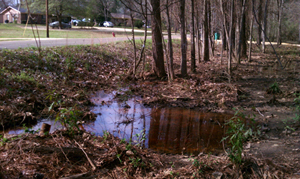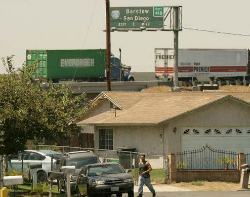A Brighter Future for My Community and Yours: A Mayor’s Perspective
By Lisa A. Wong

(c) 2015 Sentinel & Enterprise. All rights reserved. Reproduced with permission of Digital First Media.
Fitchburg, Massachusetts, is a wonderful community that built its foundation along the Nashua River. The town flourished along the banks of this great river until the industry and jobs moved south, leaving behind abandoned mill properties that deteriorated into brownfield sites. When I first decided to run for Mayor, I had one clear vision: to promote economic growth in a manner that also improves the community’s environment and public health. The projects that I have undertaken as Mayor have been based in economics, but also in promoting environmental and health equity for all the community.
My time in office has taught me a number of things, but two really stand out. First, I have come to realize that problem solving doesn’t necessarily require more spending, but it does require innovative spending. Second, government cannot solve problems alone — you have to engage the citizens of the community to develop solutions that will improve everyone’s lives. By working with my community to connect them back to the river and focusing on environmental justice challenges, we have made a better, more sustainable future for all. Today, the city of Fitchburg, Massachusetts, prospers because we are working together to promote a cleaner environment so that all of our citizens can collectively share in that brighter future.
As chair of the Environmental Justice workgroup for EPA’s Local Government Advisory Committee (LGAC), there is a lot to reflect on for Earth Day 2015. The LGAC is a federal advisory committee comprised of 30 elected and appointed officials of state, tribal and local governments who meet regularly to advise the EPA Administrator about environmental and public health issues that affect local government. Recently, the LGAC produced the EJ Best Practices for Local Governments report that highlights best practices that local governments have undertaken in communities to address environmental justice and sustainability.
The LGAC understands that communities with environmental justice concerns face many challenges when it comes to human health and the environment. Indeed, these communities are impacted more by environmental damage and health disparities than other communities. In our report, the LGAC highlighted several findings:
- EJ communities need a forum to discuss and collaborate on solutions
- EJ communities need access to resources to address community problems
- EJ communities lack the basic infrastructure for clean drinking water, stormwater, wastewater, and utilities to meet citizen needs and promote economic prosperity
My colleagues on the LGAC are very excited to share our stories about addressing such environmental challenges to promote environmental equity for all. Our LGAC members have developed innovative strategies to close economic, environmental, and health disparity gaps. In the blog posts to follow in the coming weeks, we will present examples illustrating where local governments have made advances in closing the gap of environmental and health disparities. I sincerely hope that by sharing our stories, it will inspire individuals and local leaders to take on these challenges. It is only through a continuing and meaningful dialogue at the community level that problems can be addressed and solutions found that will benefit everybody, both in terms of economics and the environment.
About the author: Hon. Lisa A. Wong is currently serving her fourth term as Mayor of the city of Fitchburg, Massachusetts. Before then, she worked for the Fitchburg Redevelopment Authority where, as director, she managed several urban renewal projects to revitalize the city.
























